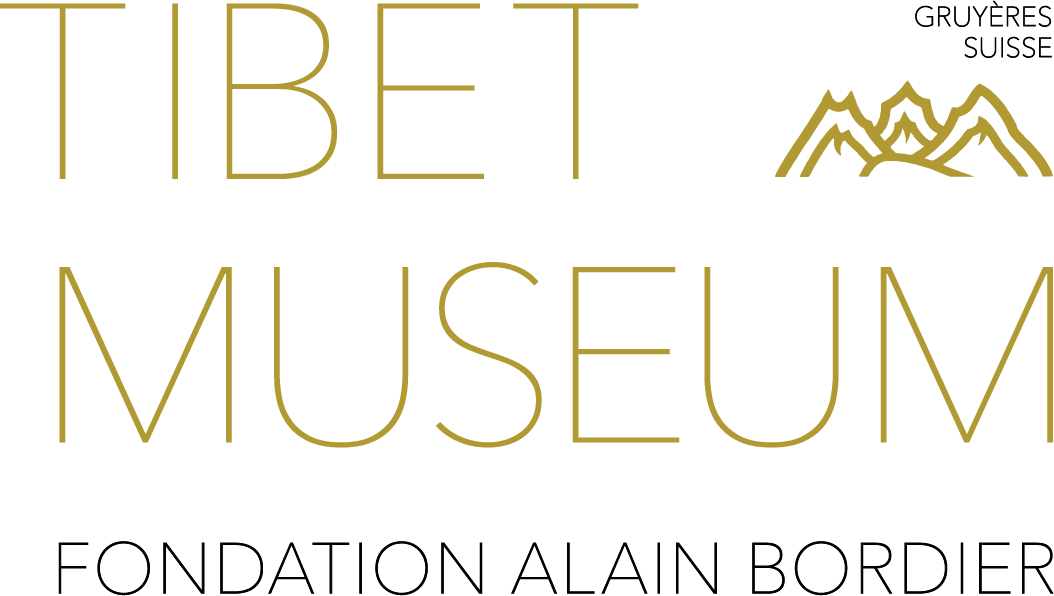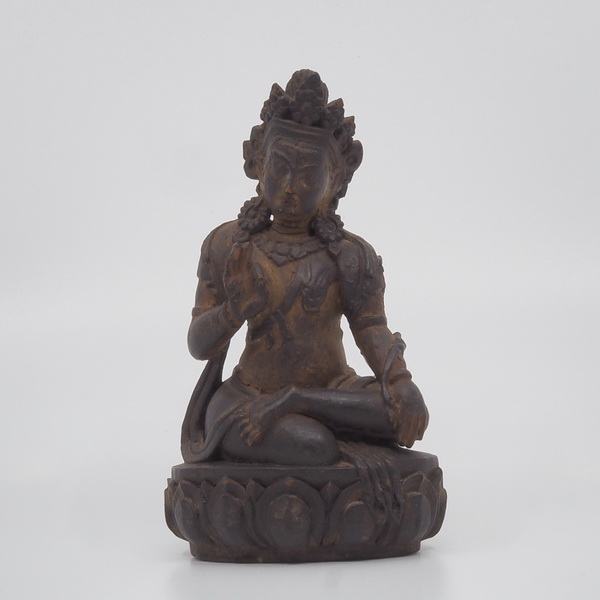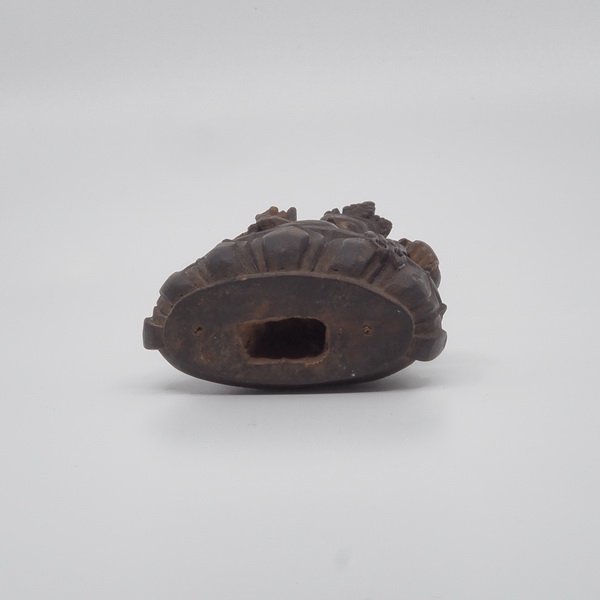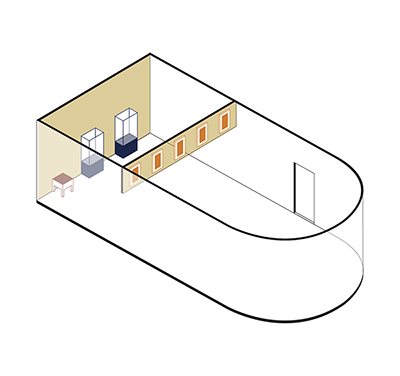ABS 334
Code: ABS 334
Country: Nepal
Style:
Date: 1300 - 1400
Dimensions in cm WxHxD: 7 x 12 x 3
Materials: Wood
Bodhisattva Avalokiteshvara
This precious wood sculpture with a beautiful patina is depicting a rare representation of the bodhisattva Avalokisteshvara in an unusual form. He is seated in the yogic posture of the semi-lotus, and forms the gesture of protection or fearlessness with the right hand, his left resting on his knee holding the stem of a lotus flower. In addition to the five-leaf crown and the royal ornaments proper to the divine manifestations, an antelope skin crosses his chest, from the left shoulder to his right hip. Avalokiteshvara embodies the compassion of all Buddhas. He is one of the most revered bodhisattvas in Buddhism.
Bodhisattvas are "heroes for the awakening". They are advanced practitioners who are motivated by compassion, and who strive to help all sentient beings to attain liberation on their path to perfect Buddhahood. Their royal adornments symbolise the quality of their spiritual realisation.
This precious wood sculpture with a beautiful patina is depicting a rare representation of the bodhisattva Avalokisteshvara in an unusual form. He is seated in the yogic posture of the semi-lotus, and forms the gesture of protection or fearlessness with the right hand, his left resting on his knee holding the stem of a lotus flower. In addition to the five-leaf crown and the royal ornaments proper to the divine manifestations, an antelope skin crosses his chest, from the left shoulder to his right hip. Avalokiteshvara embodies the compassion of all Buddhas. He is one of the most revered bodhisattvas in Buddhism.
Bodhisattvas are "heroes for the awakening". They are advanced practitioners who are motivated by compassion, and who strive to help all sentient beings to attain liberation on their path to perfect Buddhahood. Their royal adornments symbolise the quality of their spiritual realisation.






